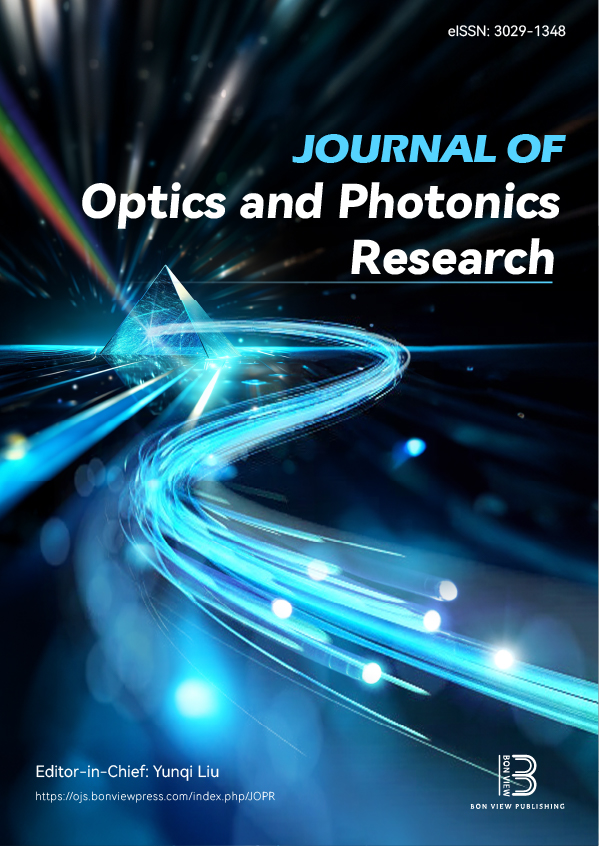High Coupling Efficiency Silicon-Based Colloidal Quantum Dot Electroluminescent Devices with Ag Reflectors
DOI:
https://doi.org/10.47852/bonviewJOPR52025619Keywords:
quantum dots electroluminescent device, waveguide coupling efficiency, on-chip light sourcesAbstract
On-chip silicon photonic chips are critical in various applications including chip-to-chip communication, sensing, and near-eye display technologies, but they all face significant challenges in efficiently coupling light sources onto the chip. This study introduces a design adopting colloidal quantum dot light-emitting diode (QLED) as an on-chip light source coupled with optimized Ag reflectors below and within the SiN waveguide. The inclined Ag reflector was positioned directly below the QLED within the GaN waveguide with an optimal angle of 45° and 100 nm thickness, along with a planar Ag reflector 500 nm below the waveguide with 200 nm thickness. Numerical simulation results indicate that at a distance of 50 μm from the QLED center, the average coupling efficiency of the device is 9.76%, which is 2.58 times higher than the counterpart without the Ag reflector. These findings demonstrate a significant improvement in coupling efficiency, suggesting a promising approach for future on-chip light source designs.
Received: 11 March 2025 | Revised: 14 May 2025 | Accepted: 29 July 2025
Conflicts of Interest
The authors declare that they have no conflicts of interest to this work.
Data Availability Statement
Data are available from the corresponding author upon reasonable request.
Author Contribution Statement
Jiajun Zhu: Validation, Formal analysis, Investigation, Data curation, Writing – original draft, Writing – review & editing, Visualization. Yuxuan Ye: Software, Validation, Data curation, Writing – original draft, Writing – review & editing. Fankai Zheng: Software, Validation, Investigation. Yilan Zhang: Writing – review & editing, Visualization. Zhiyang Lu: Software, Writing – review & editing. Hechun Zhang: Data curation, Writing – review & editing. Sifan Chen: Writing – review & editing, Supervision. Jiongwen Fang: Writing – review & editing. Yunji Yi: Methodology, Resources, Writing – review & editing, Supervision. Kai Wang: Methodology, Resources, Writing – review & editing, Supervision. Dan Wu: Conceptualization, Methodology, Resources, Writing – review & editing, Supervision, Project administration, Funding acquisition.
Downloads
Published
Issue
Section
License
Copyright (c) 2025 Authors

This work is licensed under a Creative Commons Attribution 4.0 International License.
How to Cite
Funding data
-
National Natural Science Foundation of China
Grant numbers 62475171 -
Basic and Applied Basic Research Foundation of Guangdong Province
Grant numbers 2025A1515011655


